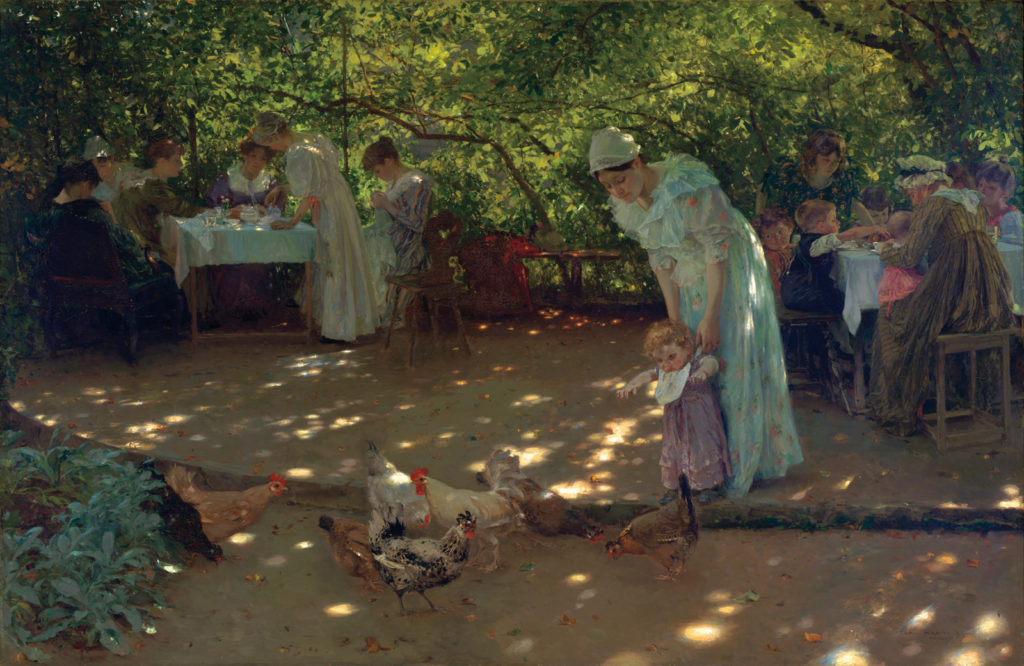What is it?
Artist
Carl von Marr (Milwaukee 1858–1936 Munich)
Title
Summer Afternoon
Year
1892
Medium
Oil on canvas
Dimensions
52 ¾ x 81 ½ in.
Credit line
Purchased 2020, Melitta Suder-Pick Charitable Trust
About the Work
About
Carl Von Marr’s Summer Afternoon, perhaps the most popular painting in the Museum of Wisconsin Art, depicts some of life’s greatest pleasures: glorious weather, food and leisure, and the company of family and friends. Within the quiet, shaded recesses of a back garden, women and children gather to escape the heat of the summer sun under a verdant canopy of trees. Women of all ages enjoy tea and conversation, while a nanny and her charges congregate nearby. A toddler entranced by a brood of chickens in the foreground underscores the painting’s quotidian subject. Soft, dappled sunlight illuminates this slice of life in Munich.
Such scenes of modern life had been made popular by the French Impressionist painters in the 1870s and 1880s. German artists such as Max Liebermann, Max Slevogt, and later Lovis Corinth developed a brand of German Impression that blends elements of plein-air painting in France and German Realism. Von Marr’s Summer Afternoon belongs solidly in this category in its subject matter, easy short brushstrokes, and playful network of light and shade that animates but does not dissolve form and space as in the work of the French Impressionists. On the whole, German Impressionism is more subdued and more strongly oriented to the subject than its French counterpart.
Summer Afternoon was awarded a gold medal in Berlin in 1892, before joining the artist’s magnum opus, the Flagellants, at the 1893 World’s Columbian Exposition in Chicago. The convivial and relaxed summer idyll offers a stark contrast to Von Marr’s dramatic history painting. Summer Afternoon was in the collection of California philanthropist and feminist Phoebe Hearst until 1911 when it was gifted to the University of California, Berkeley and later purchased by the Museum of Wisconsin Art.

